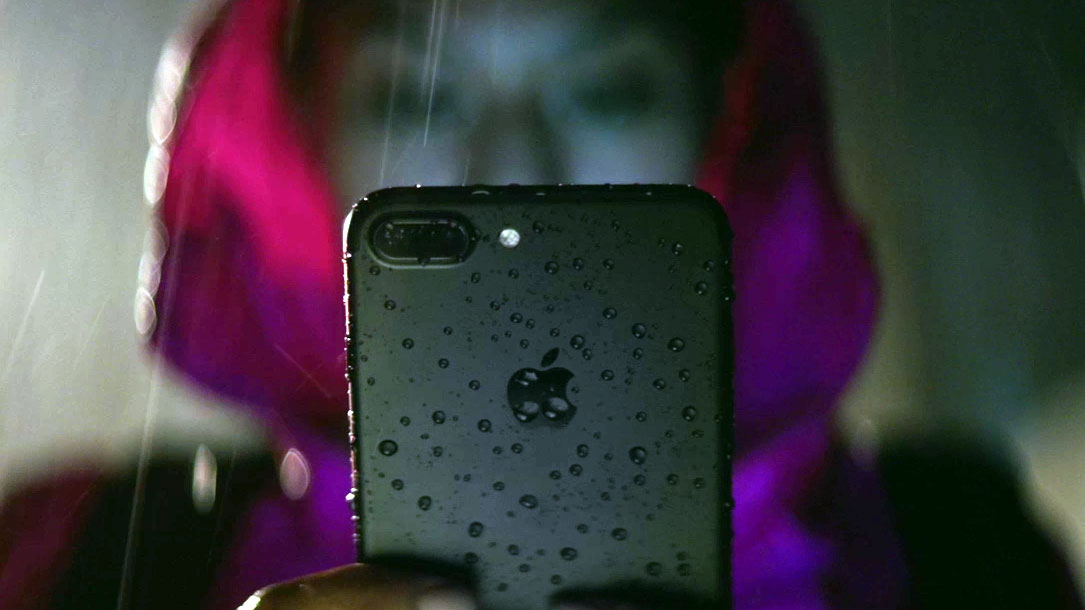The must-have apps for your new iPhone
The perfect apps for a perfect iPhone

The iTunes App Store is crammed with more than two million apps. But unless you know your stuff it’s hard to find the gems not already recommended by friends and family.
We’re going to look at all the apps you need to get the most out of your iPhone - it can probably do a lot you haven’t thought of yet.
So if you've just picked yourself up a new iPhone 7, or asked Santa to deliver you an iPhone 7 Plus this Christmas, you've come to the right place.
Even if you've looked to save yourself some cash by picking up the still excellent iPhone 6S or 6S Plus - or saved your pockets with the dinky iPhone SE - we can still help you get the ultimate setup.
To keep things simple, let’s break it down into the basic app categories.
- Stock up: Best iPhone apps | Best iPhone games
Music

There’s nothing wrong with the standard music player on your iPhone. It looks great, it’s easy to use and it is fast.
If you want to try something else, though, download Ecoute. This is a very pretty music player app that makes more use of cover art, so is perhaps best suited to those who don’t keep a gigantic collection on their phone.
Sign up for breaking news, reviews, opinion, top tech deals, and more.
It can hook into Last.FM too, in order to keep track of exactly how many times you’ve played tracks X, Y and Z.
Audio nuts will also want to check out Korg’s iAudioGate. It’s a true Hi-Res music player that supports files iTunes won’t handle, such as DSD and FLAC - but it will set you back $7.99 (£5.99, AU$12.99).
If you’ve already forgotten your old digital music collection and are ready to go fully streamed, it’s just a case of choosing which service to jump into bed with.
The most obvious is Spotify, a $9.99 (£9.99) a month service that streams music at up to 320kbps using the Ogg Vorbis format. Anyone telling you Spotify streams are low-quality is wrong.
Alternatives include Deezer, Qobuz, Tidal and Apple’s own Music service, which costs $9.99 (£9.99) a month just like Spotify. Tidal also has a “Hi-Fi” lossless audio subscription service for $19.99 (£19.99) a month.
There are other sides to audio too, of course. We’re talking about podcasts and internet radio.
We recommend podcast fans ditch the standard iTunes podcast browser and download Overcast. It’s a fab podcast finder and player that’s free to use, or you can pay $9.99/£8.99 a year to get rid of the pesky ads.
For internet radio our top pick is the long-standing TuneIn Radio. Its station selection is both epic and international. It’s quite intimidating at first. However, once you’ve selected your favorites you’ll be fine. This app can also record radio, which is pretty neat.
Video

The big screens of the 6 Plus, 6S Plus and 7 Plus makes iPhone-based video playback a far more enjoyable experience, so make sure you have the right tools to enjoy them fully.
Thing is, those who like to watch their own digital movie collection on their iPhone are likely to hit a wall when they try to play their files. iTunes only supports very limited formats, and unlike an Android you can’t just drag and drop files over to the phone’s storage using a third-party app.
There is an easy solution, though. Infuse 5 lets you play just about any video file without transcoding it into an iTunes-friendly format, and you can either stream from sources like Google Drive or Dropbox, or add them as app ‘documents’ in iTunes.
Many of us have moved away from playing locally-stored video these days, though. Streaming is just easier.
Video streaming apps you don’t want to miss include Netflix (from £5.99, $7.99 for non HD a month), Sky Now TV (UK only), Amazon Prime Video, YouTube and Hulu (US only). These all have their own apps.
Social

Love it or hate it, social networks are more important than newspapers these days. We don’t have to tell you about the main platforms, Facebook and Twitter. Many of you will have these apps installed already.
However, you can dig deeper too. There’s a separate Messenger app for chatting over Facebook, for example, and third-party Twitter apps let you interact with Twitter in a slightly different way to the official one.
The top pick is Tweetbot 4, which has more customization in its interface, notifications and what shows up in your feed, through the use of clever mute filters. It’s not cheap at $8.99 (£7.99), but works cross-platform (including Apple Watch) and may make your Twitter experience that much better.
Outside the big hitters, the social apps you download should depend on which network(s) you want to get involved with.
Pinterest is great if you’re into design or clothes, Instagram is a much more picture-led way to up your social media profile and Snapchat is perfect for pure silly fun with your friends. Its face-morphing filters aren’t to be missed. Give it a download to see what we mean.
Messaging

If you and your friends all have iPhone then Apple's pre-installed iMessage service is perfect. For those with Android, Windows and BlackBerry-toting buddies though there are some strong contenders for you to pick from.
More than a billion people use WhatsApp. We can’t imagine many of you haven’t used, or at least heard of, this amazing messaging app.
There are other alternatives too, though. Kik, Viber and Line all do similar things, but have some slightly different elements. Line features ‘stickers’, for example, but you have to buy these with an in-app currency called Line coins.
When choosing between these, the best strategy is to see which most of your friends use. In most cases it’ll be WhatsApp.
You might want to try to bring some of them over to using Signal, though. This is a slightly plainer-looking messenger, but one with excellent security and privacy features, which are becoming more important by the year.
You’ll start getting email through to your iPhone as soon as it’s setup, but you can actually change the app you use to receive these emails.
Why not get on-board with arch-rival Google and download Gmail? It’s not quite as good as the version used by Android, but is still ultra-clean and quick.
The best email client for iPhone might be one you’ve sworn off in the past, though: Microsoft Outlook. This is nothing like the painful Outlook experience you may have had with an old work PC in the past.
It’s easy to use, accepts all sorts of email accounts and lets you see your calendar appointments in the same app.
Keyboard
One iPhone feature many people don’t know about is the ability to change the keyboard from the default one. Apple added this way back in 2014.
There’s no single best iPhone keyboard because the best of these apps succeed and fail based on their feel, which is highly subjective. However, there are two you should definitely check out.
The simple-but-great option is Google Gboard, which is the iOS version of the keyboard Android uses as standard. It looks and feels great to our eyes and fingers, and lets you subtly wave two fingers at Apple. Even iPhone die-hards want to do that sometimes.
Swiftkey is a must-try for the tech heads out there, because it’s far more customizable than either the default iOS keyboard or Google’s one.
It’s smart, learning from both what you type and what you have typed in your Gmail and Facebook accounts, if you give Swiftkey access to them. There are also reams of themes that alter the look of the keyboard too.
For those in the US, there’s a more dynamic option too. Microsoft Word Flow is a seriously clever keyboard with a mode designed for easy one-handed typing, which arcs out the letters so you can reach them all with a thumb. Genius.
Travel and Holidays

If you’re a bit of a jet-setter or just use public transport a lot, there are two apps you can’t be without: CityMapper and TripAdvisor.
CityMapper is the ultimate journey planner app, using live public transport data in 38 cities to give you to-the-minute accuracy on when trains and buses are going to arrive. It’ll also let you order taxis and calculate routes by foot, bike and car if you don’t fancy waiting for the bus.
Those in big cities might want to try out Uber too, which tends to get you cheaper taxi fares than elsewhere.
For trips abroad and to any cities you don’t already know, get TripAdvisor. This super-popular app crowdsources its content, compiling reviews on everything from the local Pizza Hut to trendy galleries you might not find in a guide book.
You can also download entire cities’ worth of data so you don’t need to use roaming while you’re in another country.
Productivity
Every new iPhone comes with the iWork app suite, which is Apple’s version of Microsoft Office. The most important apps in this family are Pages, Numbers and Keynote. These are a word processor, spreadsheet and presentation-maker.
They are ultra-accessible apps, perfect if you don’t want to do anything too complicated.
Microsoft has also made rather good iPhone versions of its Word, Powerpoint and Excel programs if you want more control too. However, they don’t come for free.
You can download the apps without paying, but you’ll need to get hold of an Office 365 subscription after the 30-day trial runs out. These start at £5.99, $6.99 a month, and the cheapest sub gets you the Office mob of apps on one phone, one PC/Mac and a tablet.
If you need to use more devices you can get the Home subscription, which lets five phones, five PCs/Macs and five tablets use the software.
If that all sounds like too much, you might want to try a third-party alternative like Polaris Office. You can use this fully featured suite for free with limited cloud storage, or pay from $3.99, £2.99 a month for the full-fat version.
Entertainment & News
Facebook isn’t a great way to keep clued-up on what’s going on in the world. You’ll get a much better view with a news/entertainment app like Flipboard.
This takes the topics you’re interested in and turns them into a virtual magazine you flick through page by page. You see the headlines and lead images on these pages, and then can tap on each to read the full story. The list of sources is mammoth and the presentation is just about flawless.
There are other apps just like this if you don’t like Flipboard too: Pulse and Circa are just a couple of examples.
These give you a curated news feed, and can even pull in updates from your social media channels. However, there are alternatives if you don’t want to be led by the hand.
Pocket lets you “save for later” articles you stumble upon. We don’t know about you, but we tend to forget about 90 per cent of the stuff people say we absolutely must read. Pocket saves you from this.
An app like Feedly also lets you curate your sources more directly, letting you pull in RSS feeds from your favorite sites to give you more control over exactly what ends up in your news feed.
Security

iOS is always talked about as the most secure mobile OS going, but there are several smart ways to make it more so.
One is to get Find My iPhone setup. This is an Apple app that lets you locate your device if it’s lost or, worse, stolen. It’ll let you fire off a sound through the iPhone’s speaker from your laptop’s browser, or wipe your phone’s data if you think it’s gone for good.
That’ll do for a starter. However, unlike Windows, OS X or Android, traditional anti-virus software isn’t a big thing on iOS. This is because all the software you put on your iPhone comes from the App Store, which already filters for nasties.
Packages like Avira still scan your email accounts for known threats, though, to keep you from tapping on a nasty link.
The meat of security on iOS is more about protecting you from unsecured Wi-Fi networks and managing your passwords. VPN packages like NordVPN block out attacks from public networks you might connect to by creating an encrypted virtual tunnel between your phone and a secure server.
The service costs a few bucks a month, but is worth considering when it can also be used with your laptop and other internet-connected gadgets.
Also, consider getting a security manager like 1Password. It lets you store all your passwords behind a single master password, making that the only one you need to remember.
It’s the easiest way to get over the bad habit of using the same handful of passwords over and over again, without much effort.

Andrew is a freelance journalist and has been writing and editing for some of the UK's top tech and lifestyle publications including TrustedReviews, Stuff, T3, TechRadar, Lifehacker and others.